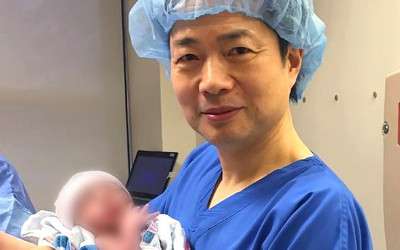AKIPRESS.COM -  The world's first baby has been born using a new "three person" fertility technique, New Scientist reveals, BBC reported.
The world's first baby has been born using a new "three person" fertility technique, New Scientist reveals, BBC reported.
The five-month-old boy has the usual DNA from his mum and dad, plus a tiny bit of genetic code from a donor.
US doctors took the unprecedented step to ensure the baby boy would be free of a genetic condition that his Jordanian mother carries in her genes.
Experts say the move heralds a new era in medicine and could help other families with rare genetic conditions.
But they warn that rigorous checks of this new and controversial technology, called mitochondrial donation, are needed.
It's not the first time scientists have created babies that have DNA from three people - that breakthrough began in the late 1990s - but it is an entirely new and significant method.
Mitochondria are tiny structures inside nearly every cell of the body that convert food into usable energy.
Some women carry genetic defects in mitochondria and they can pass these on to their children.
In the case of the Jordanian family, it was a disorder called Leigh Syndrome that would have proved fatal to any baby conceived. The family had already experienced the heartache of four miscarriages as well as the death of two children - one at eight months and the other at six years of age.
Scientists have devised a number of fertility methods to help such families.
The US team, who travelled to Mexico to carry out the procedure because there are no laws there that prohibit it, used a method that takes all the vital DNA from the mother's egg plus healthy mitochondria from a donor egg to create a healthy new egg that can be fertilised with the father's sperm.
The result is a baby with 0.1% of their DNA from the donor (mitochondrial DNA) and all the genetic code for things like hair and eye colour from the mother and father.
Dr John Zhang, medical director at the New Hope Fertility Centre in New York City, and his colleagues used the method to make five embryos - only one of them developed normally.
